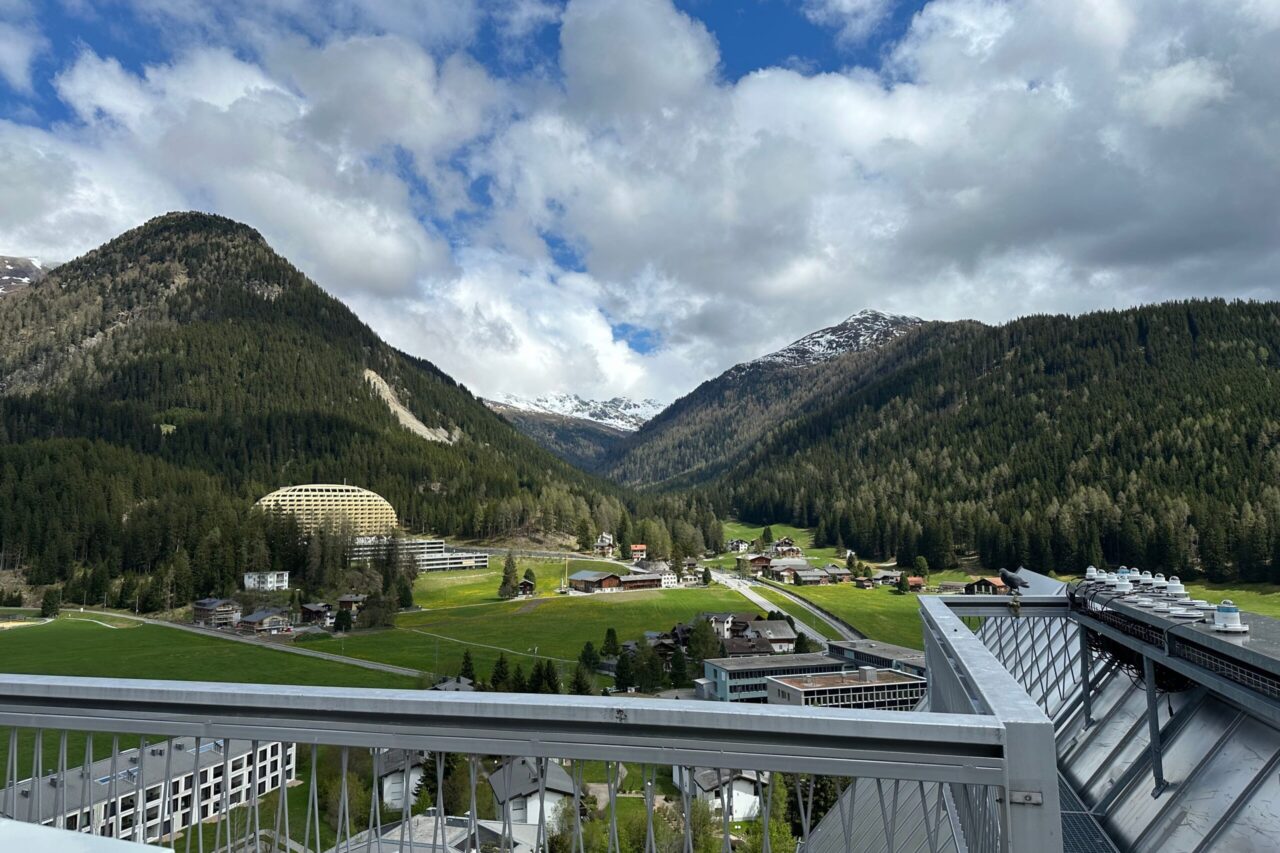“I feel like I’m in the The Sword in the Stone, with Merlin and his enchanted objects”. I heard this kind of sentence quite a lot during the World Economic Forum (WEF) Annual Meeting in Davos, while presenting the work known as the Walking Canvas for the first time, in the ETH Zurich pavilion there. I have to say, this artwork by Aparna Rao and Soren Pors, looked quite enchanting prancing around the floor in the exhibit. And on my side, I definitely felt like a magician. Not so much because I presented some entertaining objects during a week, but because I had been involved behind the scenes, bringing the illusion to life.
When you stand behind the scenes, when you know the tricks, and especially when you have created the trick yourself – in my case by working on it in India for 6 months last year – it is difficult to feel the magic that was part of the creative process again…
If you want a hint from an insider, behind the scenes there is a lot of work, some unexpected complications, but above all a great team. And if you are still curious, and if you are willing to risk losing a bit of the magic, I will show you part of the ruse through this photo series.
But don’t worry, the magic actually reappeared when we saw visitors reacting to the illusion of the canvases in a spontaneous and joyful way. And I can tell you, our week in Davos was definitely a magical week. I saw people petting the canvases, looking for the puppet strings, and even dancing with them.
Bringing Art to Life, and Life to Art
by Lucie Houel, 12 February 2020
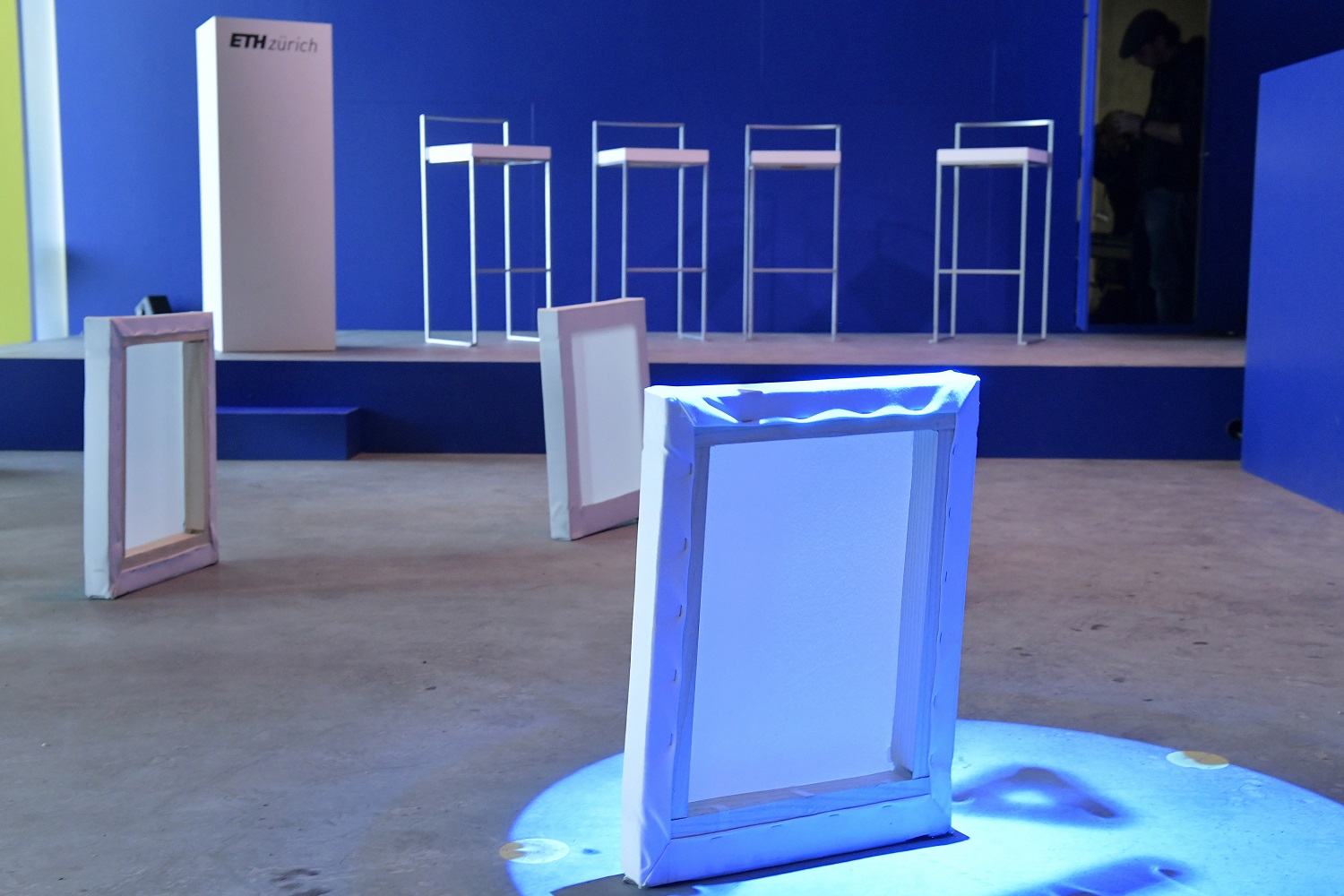
Three of the canvases displayed during the WEF. They enjoyed being in the spotlight! Image: ETH Zurich/Andreas Eggenberger
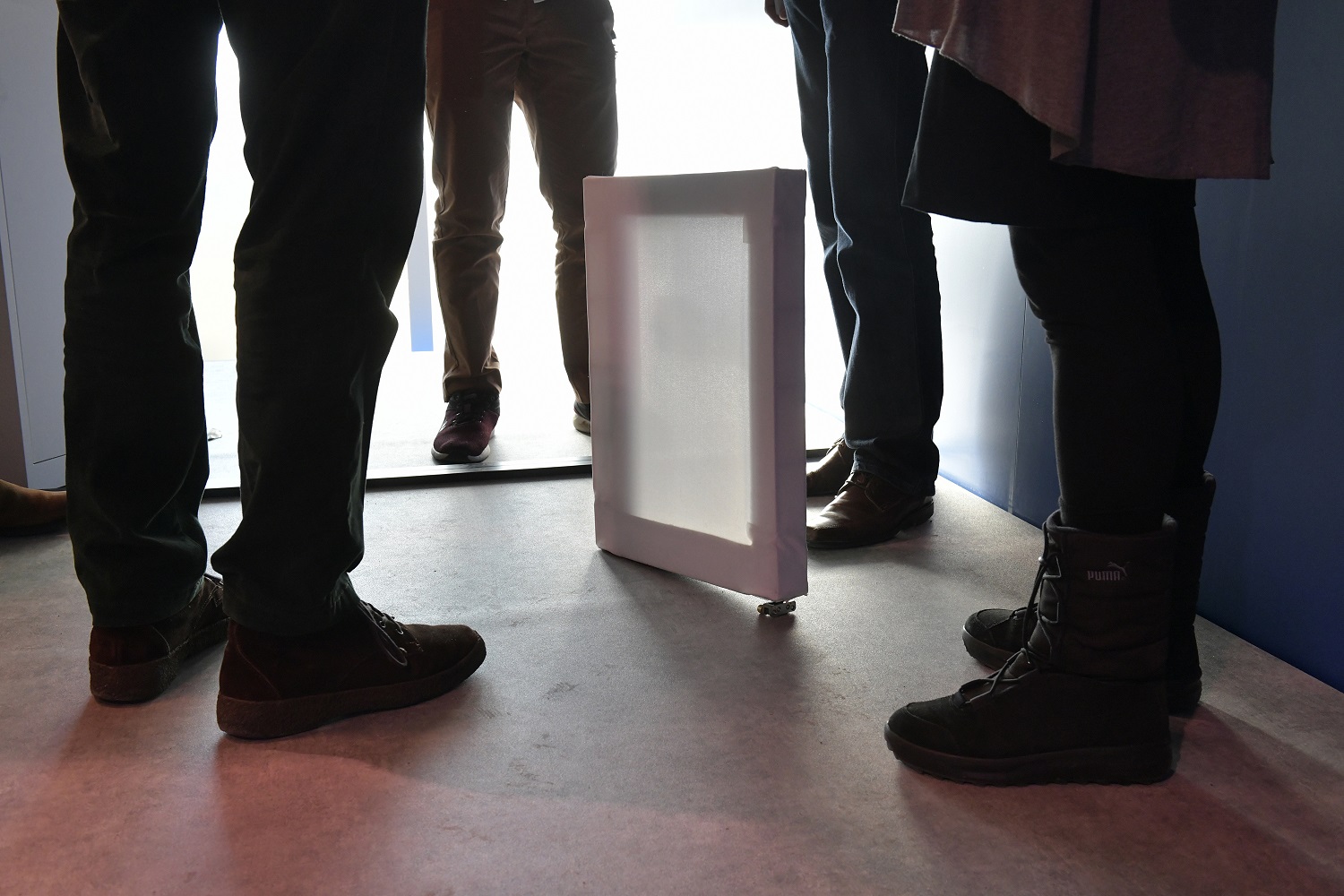
A canvas walking among visitors to the ETH Zurich pavilion. Image: ETH Zurich/Andreas Eggenberger
Testing one of the walking canvas’ feet. Credit: Lucie Houel/ETH Zurich
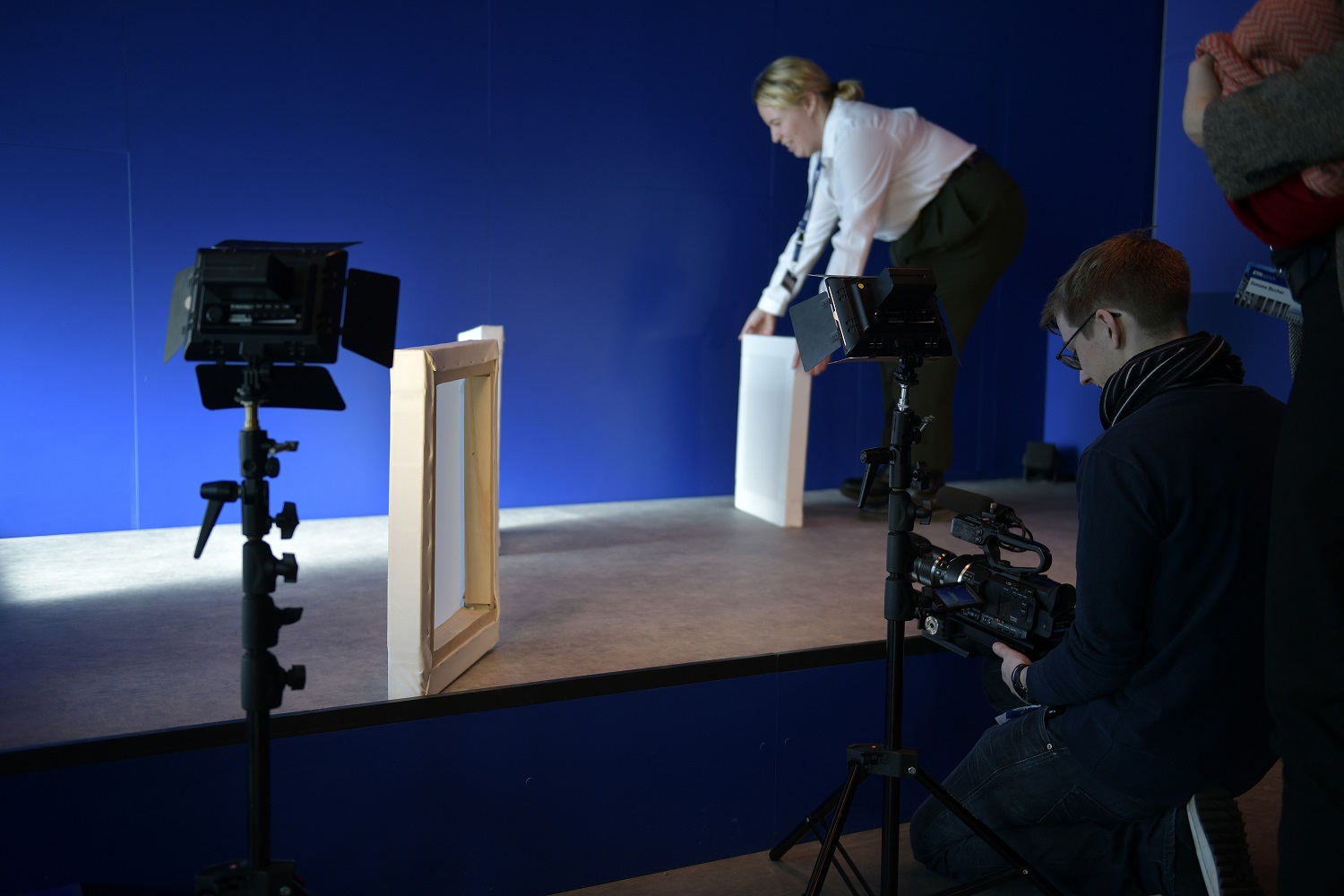
Ann-Sophie Hagander placing the canvases for a video shoot. Image: ETH Zurich/Andreas Eggenberger
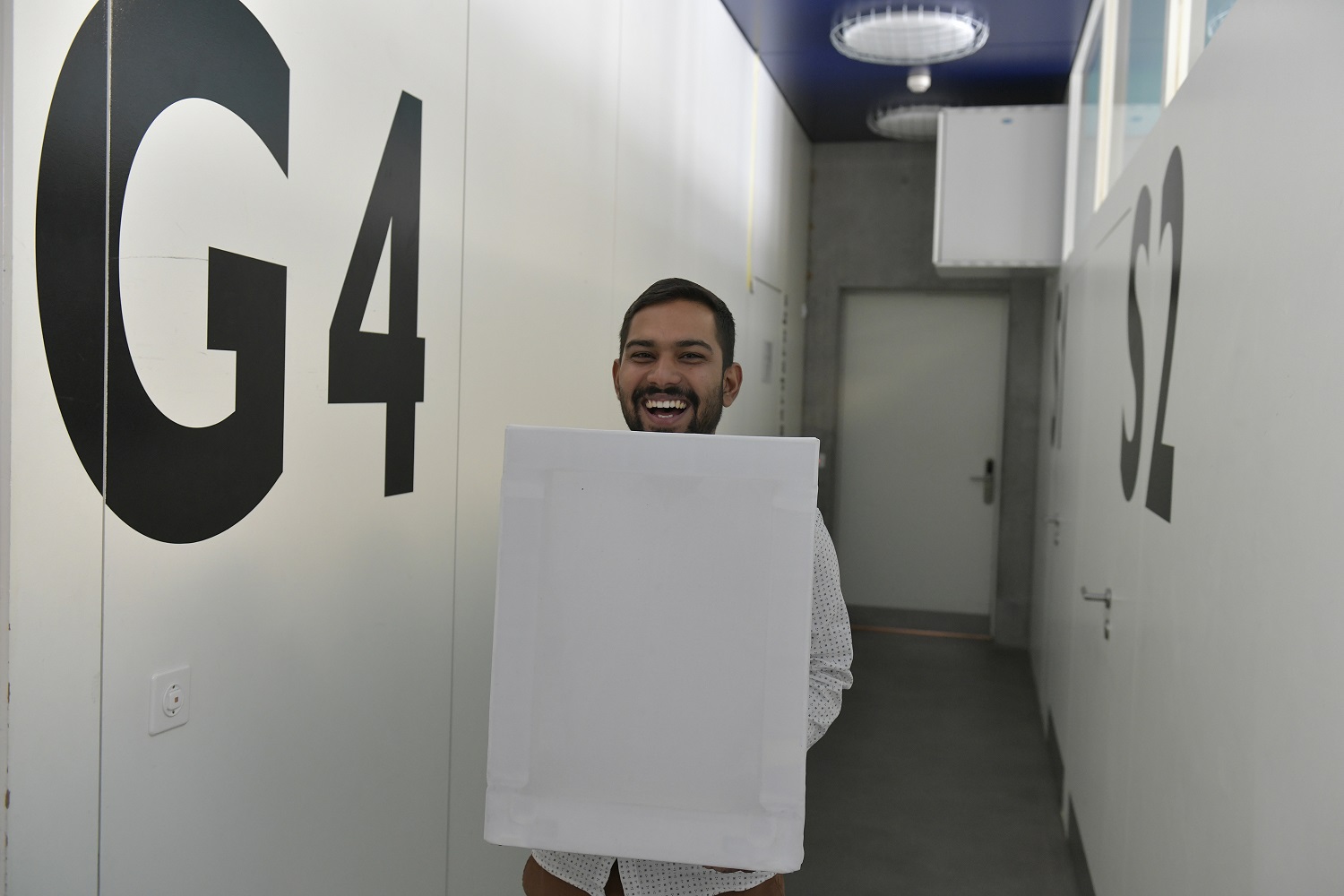
Pankaj Borthakur transporting a canvas from the staff room to the exhibition space. Image: ETH Zurich/Andreas Eggenberger
Soren Pors, creating the baby walk for the canvas. The motion is then extracted from the video to be replicated by the mechanical system. Credit: Lucie Houel/ETH Zurich
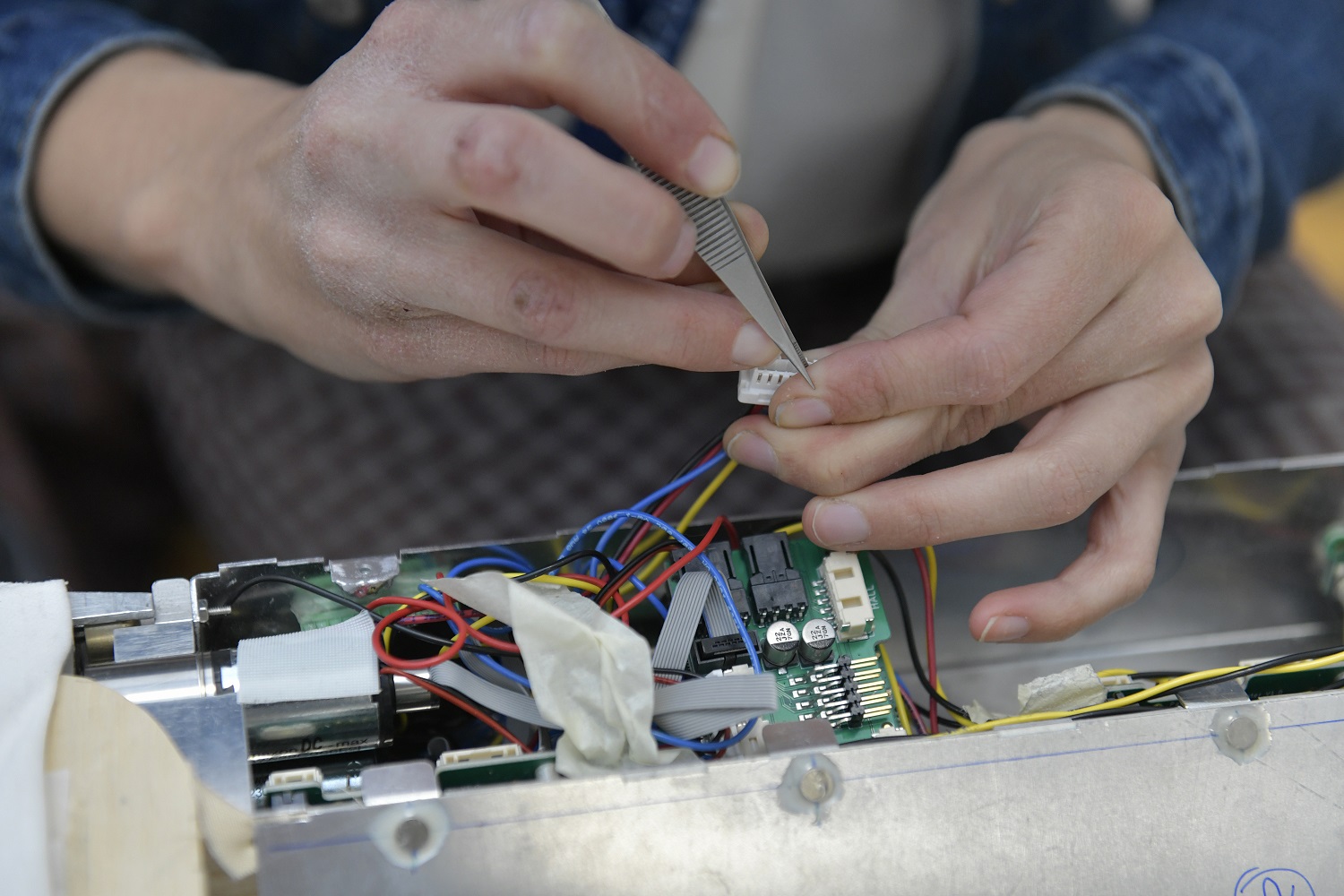
Wire reparation inside the opened walking canvas. Image: ETH Zurich/Andreas Eggenberger
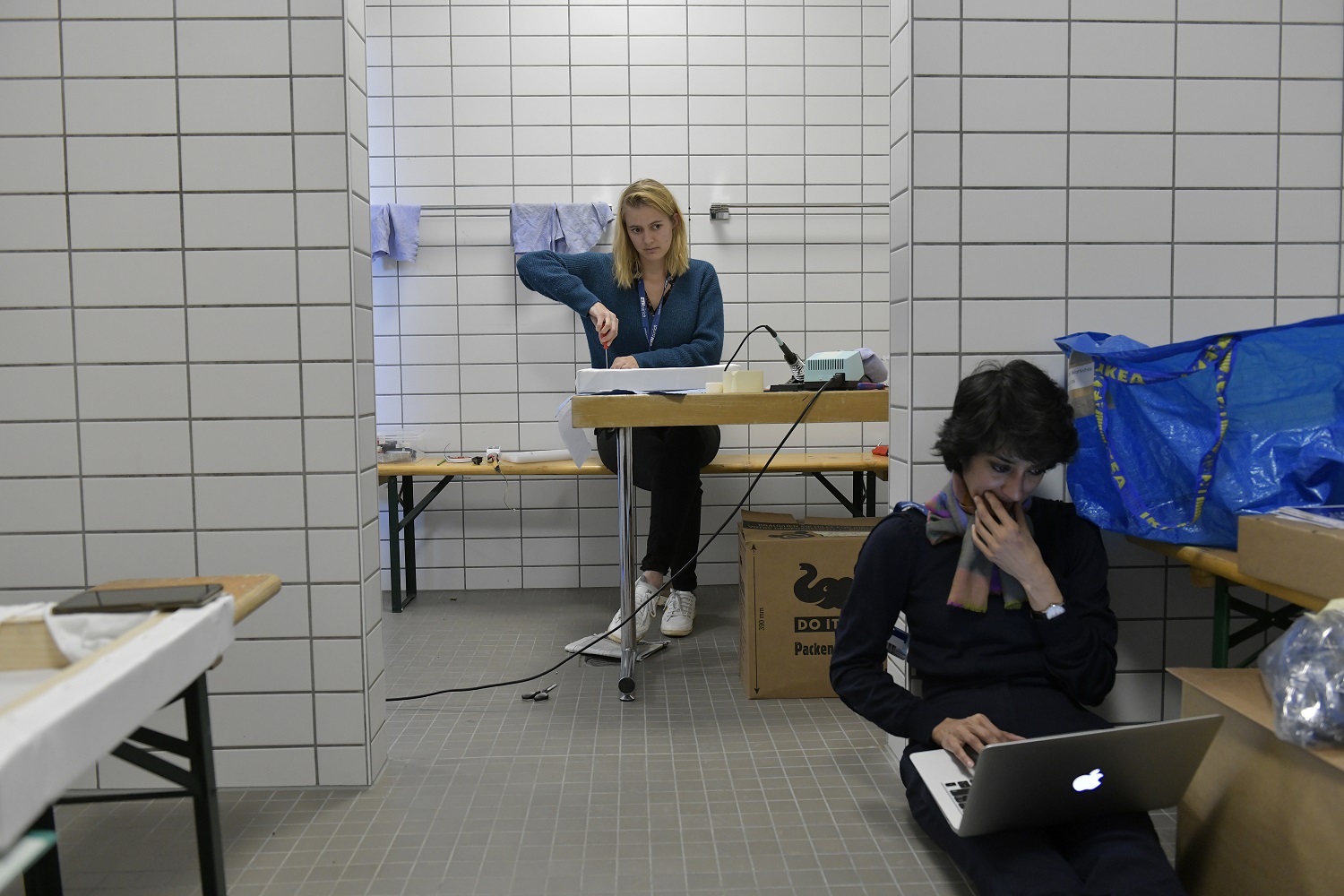
Aparna Rao (foreground) working in the staff bath-room while I change the walking canvas battery. Image: ETH Zurich/Andreas Eggenberger
The walking canvas walking in the sunlight, in front of the Davos mountains. Credit: Pankaj Borthakur
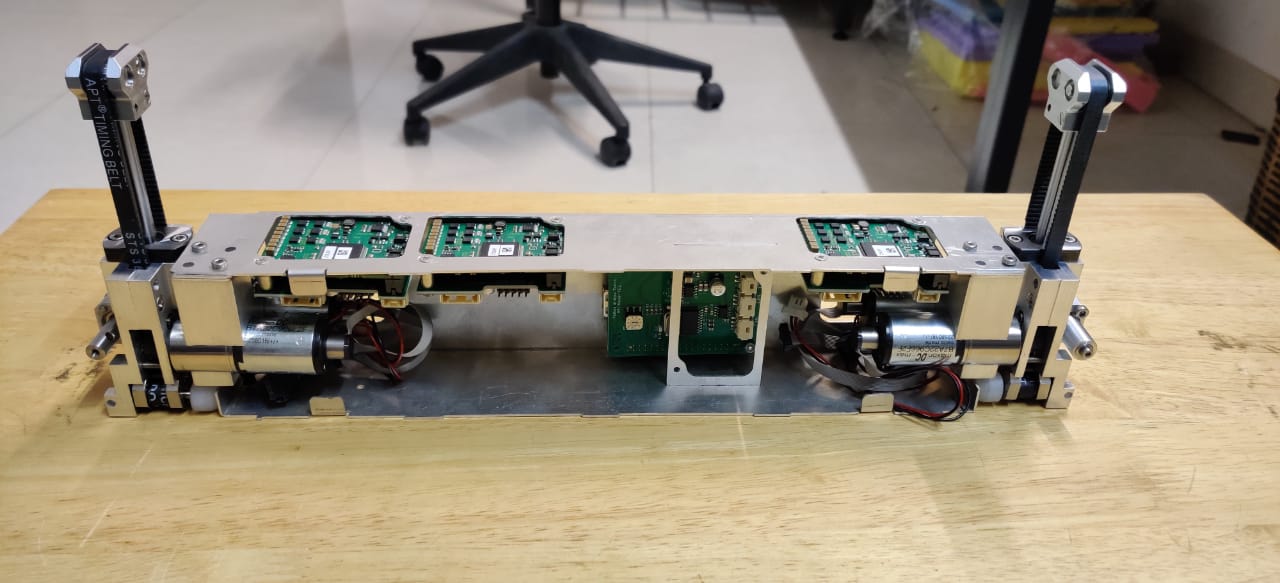
Mechanism of the walking canvas. Each foot is composed of two coupled motors and a pulleys-belt system. Image: Lucie Houel/ETH Zurich
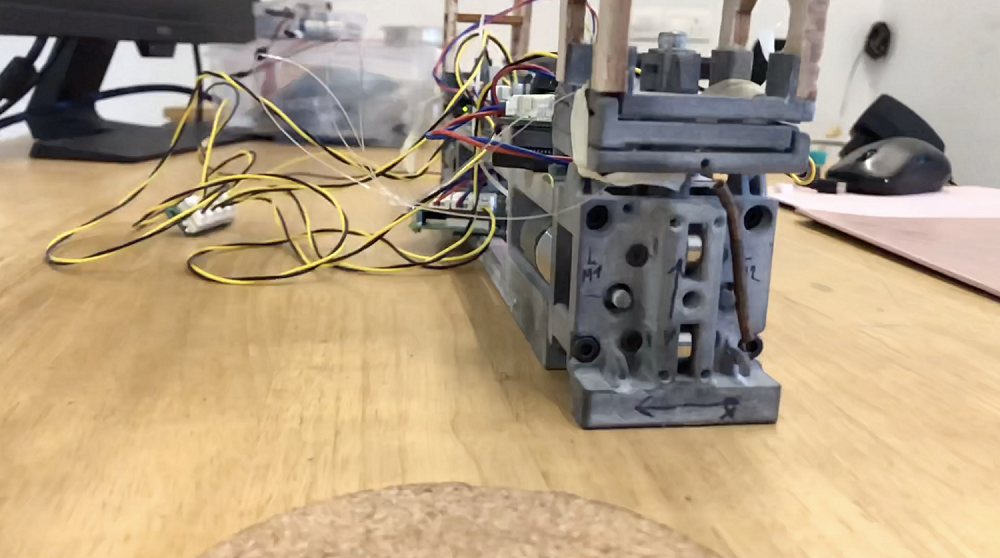
The first prototype of the mechanism was fully 3D-printed. Image: Lucie Houel/ETH Zurich
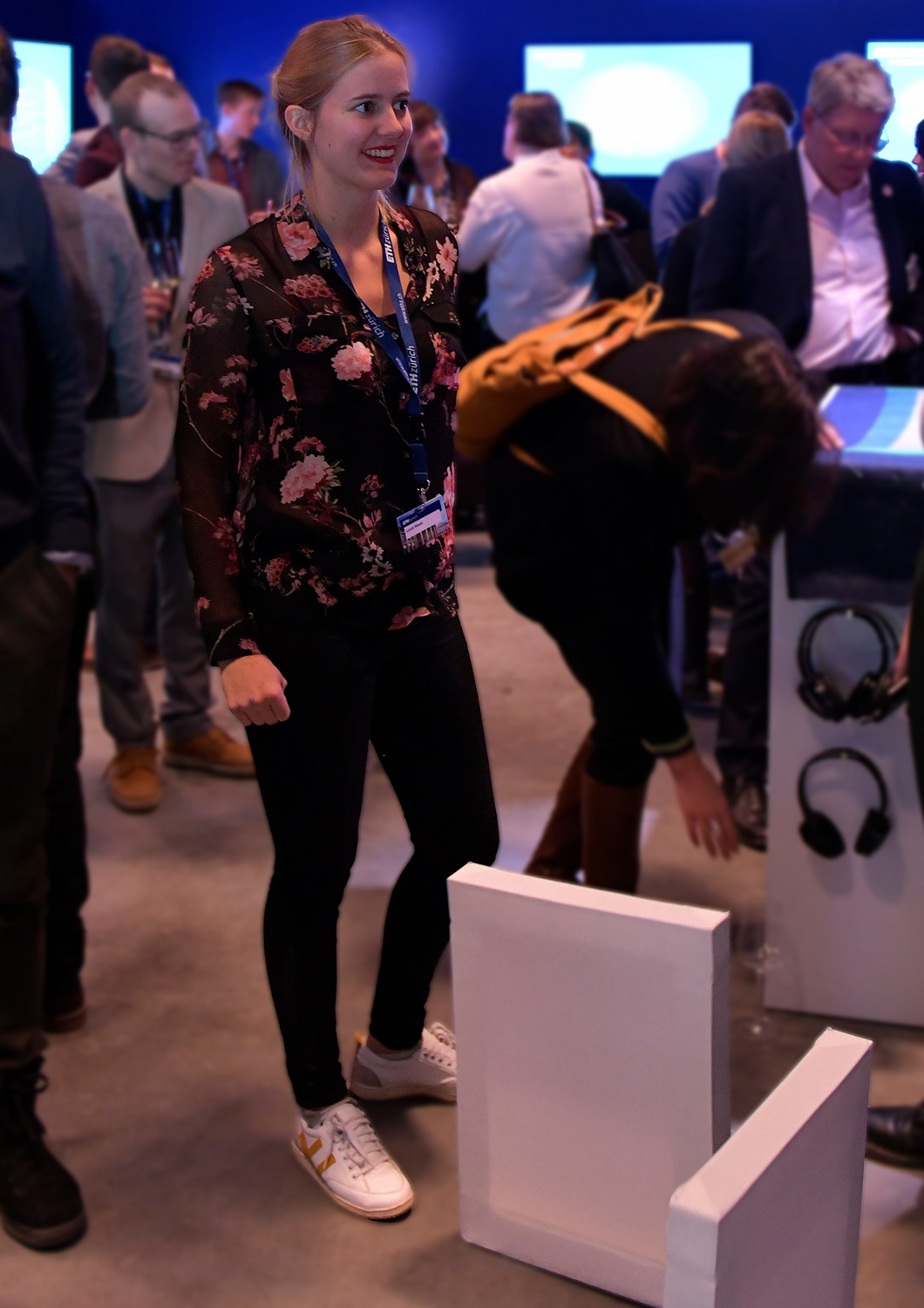
About the author
Lucie Houel, holds a MSc in Micro-Engineering from EPFL. She recently joined ETH Zurich at the Wyss Institute where she is working for PATHOS, continuing the adventure doing robotics for artists.


